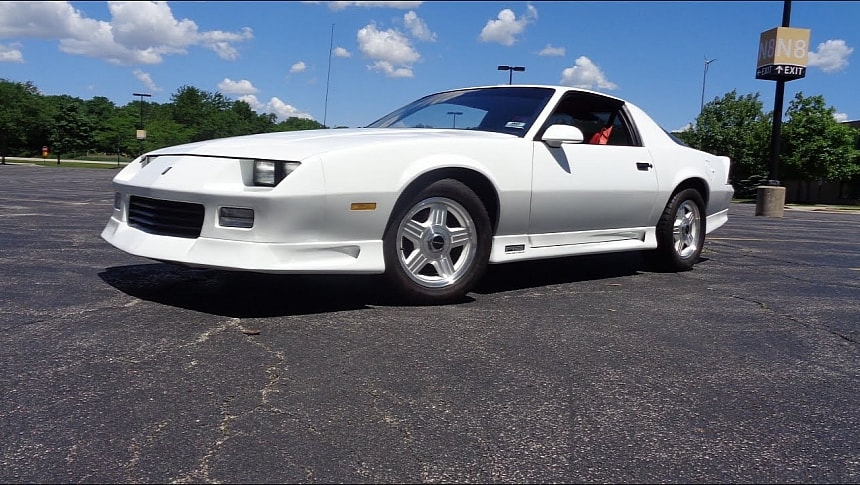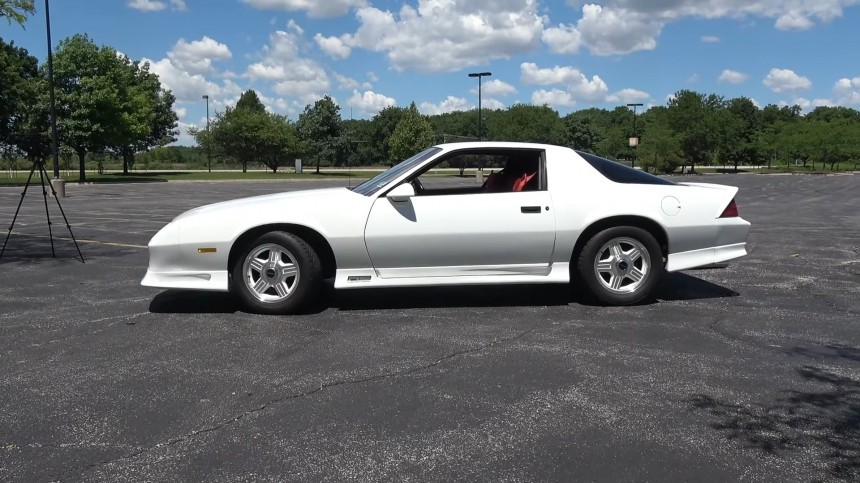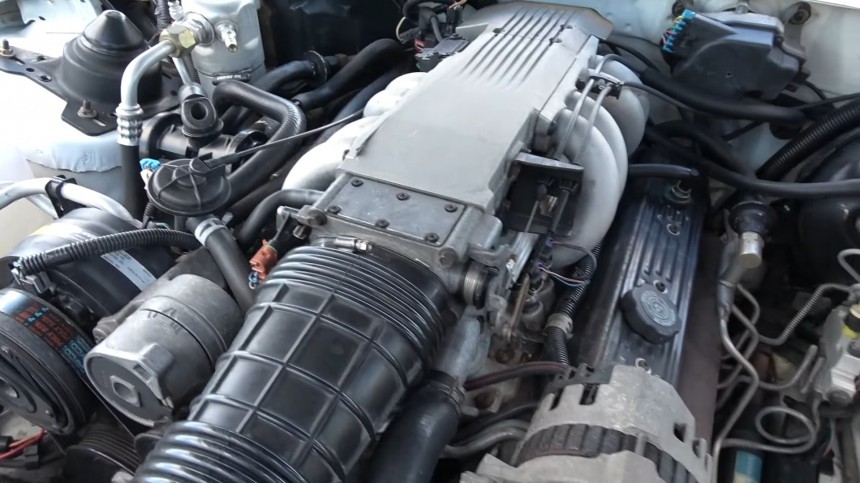In 1992, an icon of Detroit was celebrating its 25th anniversary – the Chevrolet Camaro was turning the page on its first quarter of a century. The model wasn’t performing at the same level as it had when it first burst into internal combustion in 1967, nor did it match the performance of those first years. But even in that grey period of Detroit motoring, the Camaro had something special to offer.
Officially, it wasn’t available to the general public, and it had a short life span of just two model years, with 1992 being the last. In the depths of General Motors bureaucratic cobwebs, the B4C RPO code was seldom heard—for it wasn’t for just anyone. In fact, only a special government organization—the police force — had access to it.
The Chevrolet Camaro equipped with a B4C package was going undercover as a regular RS model, one of the 60,994 bowtie ponies wearing the badge. Mind you, the total Camaro production for that year was 70,007 – the RS was anything but peculiar. However, the anniversary model did have a few special production runs numbered in the hundreds. That has to count as rare, no matter how picky we would be.
The Special Service Package (the B4C offered for police units) was ordered on 589 units (other sources cite 576 examples), and none could be bought new. Not the average Joe, anyway – rumor has it that there were privileged who could drive one right off the showroom floor and put it through its 120-mph paces.
Remember, the year was 1992, and speeds of 193 kph weren’t exactly the run-of-the-mill performance. The right person would have been a ‘first responder,’ – but I can't confirm nor deny that this allegation has a solid base or it's just pure lore.
But the B4C could reach that speed – and probably go beyond, on a good day with a strong backwind – thanks to its five-speed manual transmission and 3.42 limited-slip rear axle. The gearing in the transmission was set up differently than in regular Camaros equipped with a similar manual five-range box.
The 305 cubic-inch V8 with Tuned Port Injection was the high-performer of the day, with a net output of 230 hp and 300 lb-ft of torque (233 PS, 407 Nm). In truth, there was a more muscular engine, the 350 V8, with 245 horses and 345 lb-ft (248 PS, 468 Nm). However, that was available with automatics, so the B4C cars could outrun it if necessary.
Or, more to the point, to catch up to it, as the police Camaros were intended to keep speed addicts in check. But, with years going by, the law-enforcing agencies updated their motor pools, and the 1992 special Camaros fell out of fashion.
That wasn’t all bad news, as some of the remaining examples made it to privateers who took really good care of them. Ken Dage is one of those few lucky ones – twice fortunate, I might say. First, he has one – play the video below and see the car in action, showing off in front of Lou Costabile’s lenses.
Secondly, he has a friend who has one, and that’s how Ken learned about the rare birds and started gathering information about them. Interest turned into research, research sprouted a search, and the search yielded a find – the car nut discovered the gem and bought it on the spot.
The Chevrolet Camaro equipped with a B4C package was going undercover as a regular RS model, one of the 60,994 bowtie ponies wearing the badge. Mind you, the total Camaro production for that year was 70,007 – the RS was anything but peculiar. However, the anniversary model did have a few special production runs numbered in the hundreds. That has to count as rare, no matter how picky we would be.
The Special Service Package (the B4C offered for police units) was ordered on 589 units (other sources cite 576 examples), and none could be bought new. Not the average Joe, anyway – rumor has it that there were privileged who could drive one right off the showroom floor and put it through its 120-mph paces.
But the B4C could reach that speed – and probably go beyond, on a good day with a strong backwind – thanks to its five-speed manual transmission and 3.42 limited-slip rear axle. The gearing in the transmission was set up differently than in regular Camaros equipped with a similar manual five-range box.
The 305 cubic-inch V8 with Tuned Port Injection was the high-performer of the day, with a net output of 230 hp and 300 lb-ft of torque (233 PS, 407 Nm). In truth, there was a more muscular engine, the 350 V8, with 245 horses and 345 lb-ft (248 PS, 468 Nm). However, that was available with automatics, so the B4C cars could outrun it if necessary.
That wasn’t all bad news, as some of the remaining examples made it to privateers who took really good care of them. Ken Dage is one of those few lucky ones – twice fortunate, I might say. First, he has one – play the video below and see the car in action, showing off in front of Lou Costabile’s lenses.
Secondly, he has a friend who has one, and that’s how Ken learned about the rare birds and started gathering information about them. Interest turned into research, research sprouted a search, and the search yielded a find – the car nut discovered the gem and bought it on the spot.
































